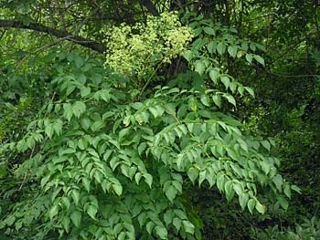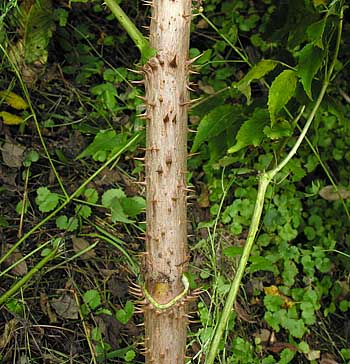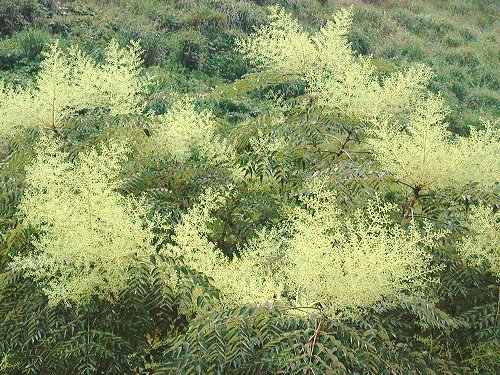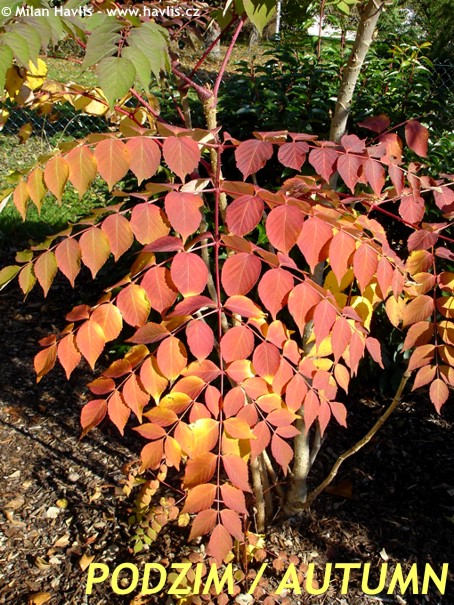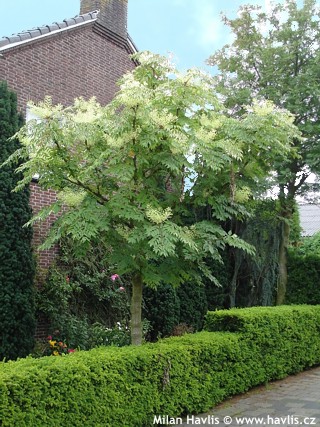Aralia spinosa devil's walking stick
Aralia
If you are looking for an architectural plant that will attract passers-by’s eyes but will require zero maintenance at the same time, and on top of that will be hardy enough not to worry about it in winter, have a look at this devil’s walking stick. Wondering why such a beauty is called a name like that? Keep reading, we will soon tell you and we will also assure you that this plants is a must have for those who love exotic appeal in their gardens.
Just one simple look at the trunk and short lateral twigs is a perfect give away to understand why it received the name devil’s walking stick. The stem (trunk) as well as the branches and the leaves, too, are covered with both small and larger spines and prickles that no intruder will ever want to break in your garden from the side where aralia is planted. Believe it or not this plant used to be grown as a hedge supposed to discourage unwanted animals from visiting cultivated areas.
However, as an ornamental plant it makes almost no danger in the season when the plant is covered with up to 150 cm long, compound, bi-pinnate leaves, which give this plant an extraordinary, very architectural look. They are mid green in summer, turning yellow, orange, red and purple in autumn. Small, white flowers are born in about 30x30 cm large terminal panicles in late summer and are followed by red-purple or almost black fruits, so loved by the birds.
This gorgeous thing deserves to be planted more often, especially in tropical and unusually looking landscapes, or just in places where you do not have much space to play with because this aralia will stand in its glory on its own without a need for a companion. The plant typically grows as one stem from the ground, producing suckers around the main stem rather quickly. forming a dense bush.
Grow it in almost any soil type, alkaline or acidic (while acidic will enhance autumn colours), but always well-drained. It likes equally moist soil throughout the season but will take drought once established. On the contrary it may lose leaves in long periods of rain if grown in water-logged soil. Aralia virtually thrives on neglect. It requires no maintenance. Pest and disease free. Fully hardy to min. -34°C, possibly more.
Last update 20-02-2010

































